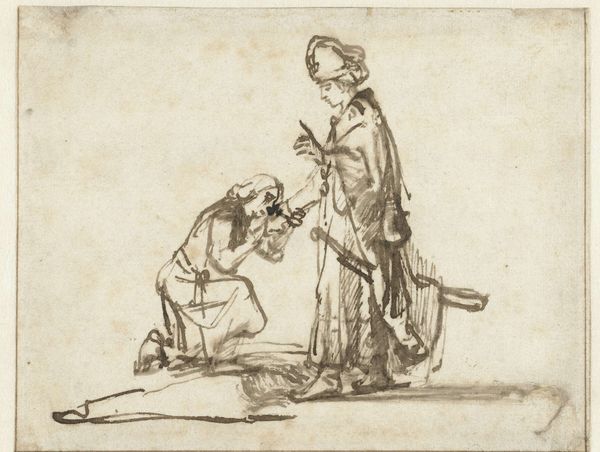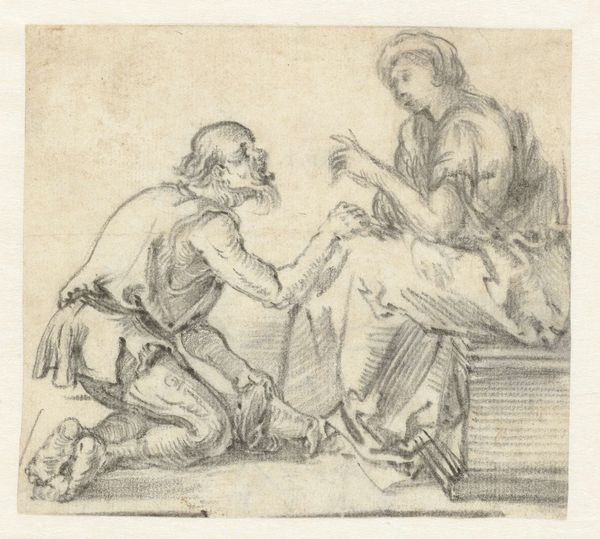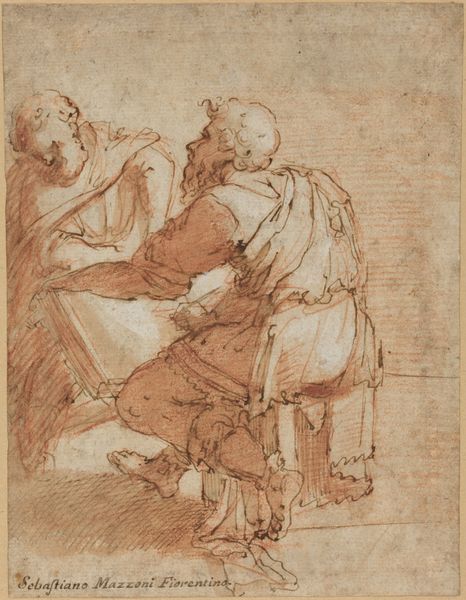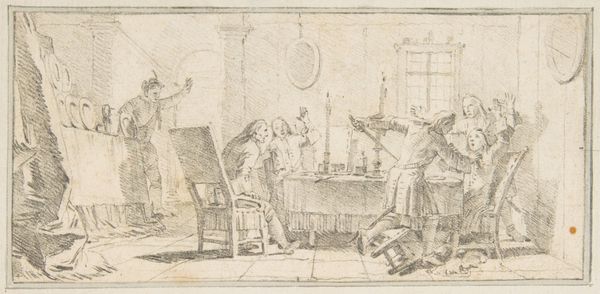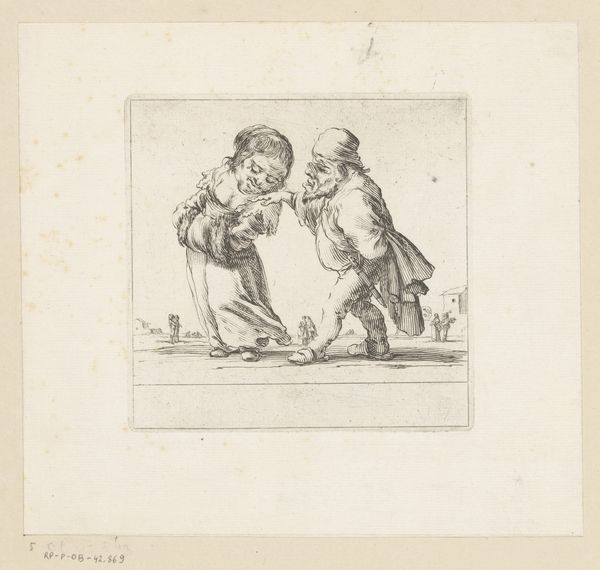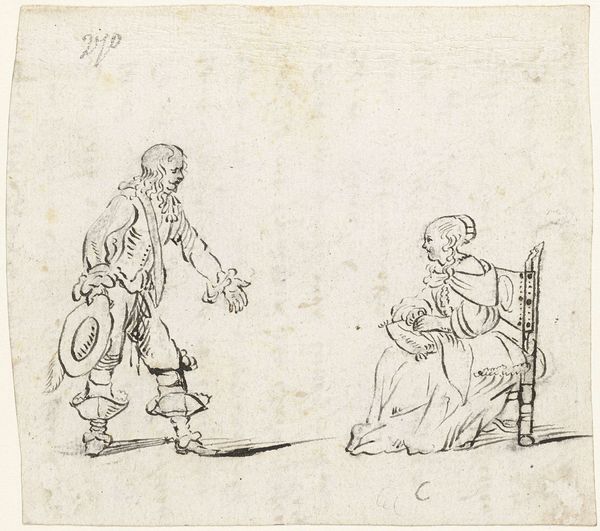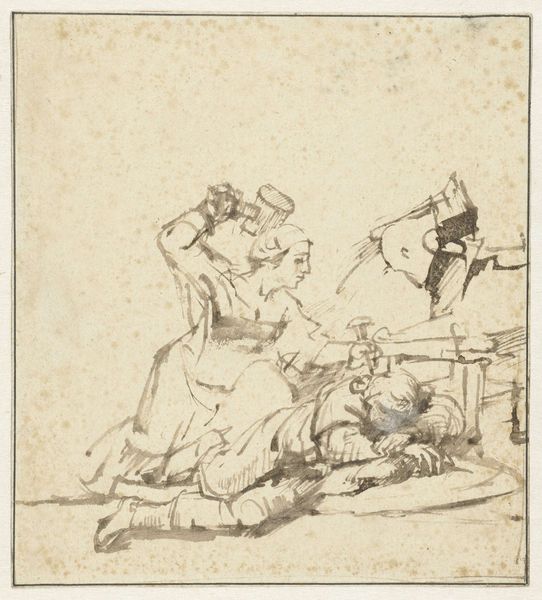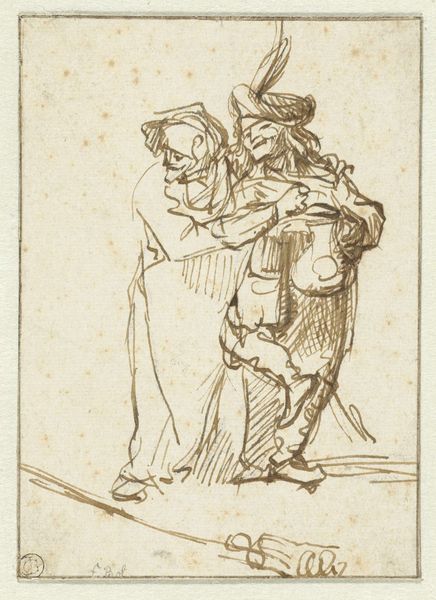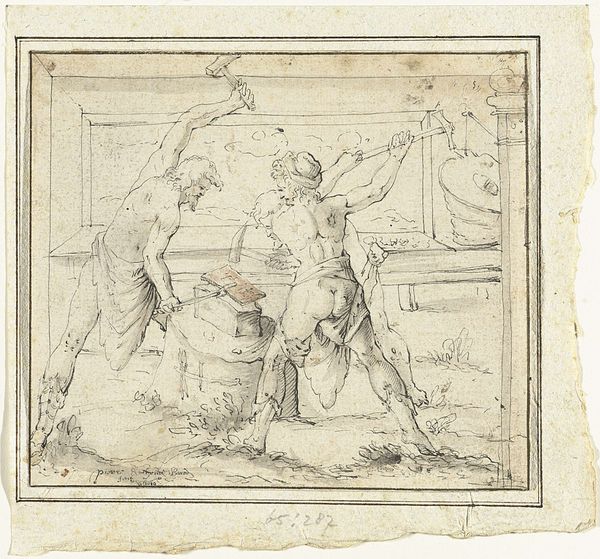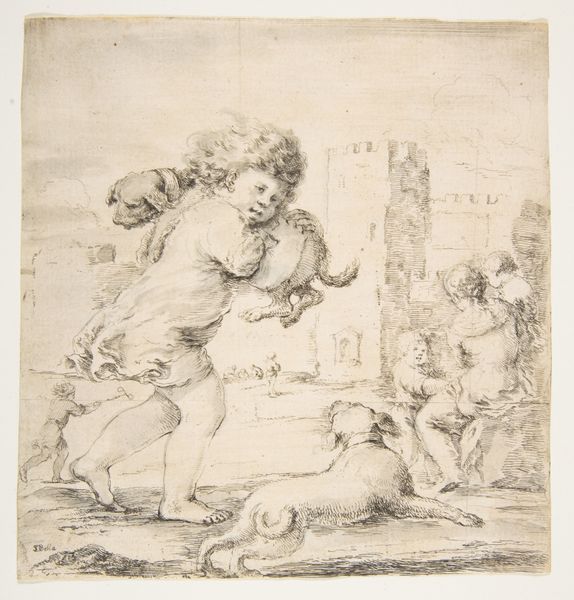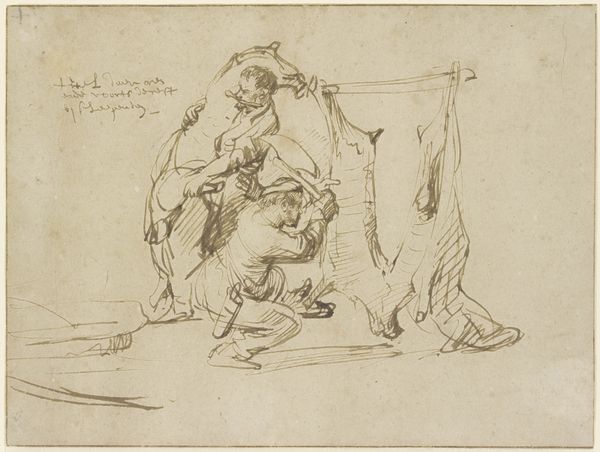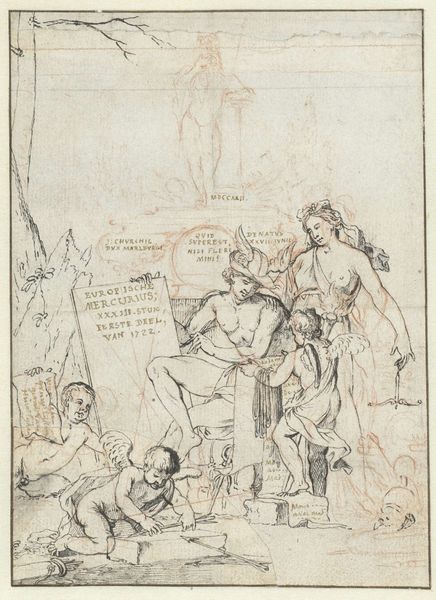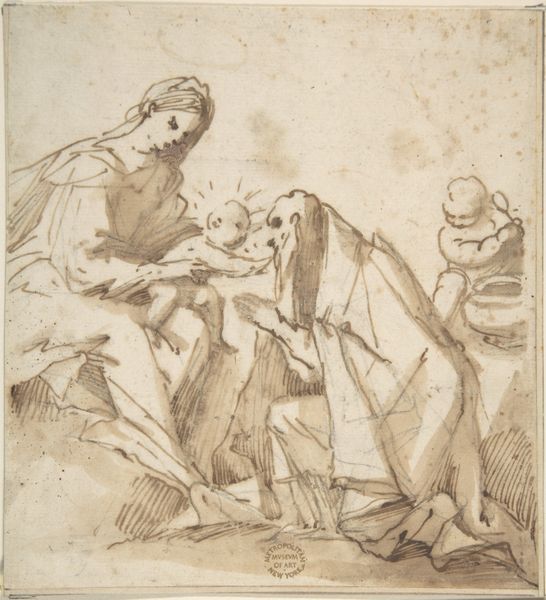
drawing, ink
#
drawing
#
narrative-art
#
baroque
#
figuration
#
ink
#
genre-painting
Dimensions: height 201 mm, width 188 mm
Copyright: Rijks Museum: Open Domain
Rembrandt van Rijn produced this pen and bistre drawing, Susanna and the Elders, in the Dutch Republic, sometime in the 17th century. It shows a biblical story from the Book of Daniel, where Susanna is spied on by two elders while bathing, who then threaten to falsely accuse her of adultery if she doesn't sleep with them. In the Calvinist Dutch Republic, the story of Susanna was seen as a warning against judicial corruption, and Rembrandt's image is striking for the way Susanna looks away from the viewer, as though turning her face from the leering gaze of the elders. How does it implicate the viewer? Is it possible that the artist is critiquing those who perversely enjoy the spectacle of female vulnerability? Rembrandt was fascinated by the nuances of human psychology, and his art often reflects an interest in the social conditions that shape individual behavior. To understand the meaning of this drawing better, look at the history of gender roles in the Dutch Republic, as well as the visual culture of the period to understand the nuances of its visual language.
Comments
rijksmuseum about 2 years ago
⋮
While bathing, the beautiful Susanna was accosted by two elders, who threatened to accuse her of adultery if she refused their advances. Rembrandt succeeded masterfully in conveying the unsavoury contrast between the position of power of the treacherous men laying their hands on Susanna and her own vulnerability. The man staring intently at her clothing on the ground emphasizes her nudity.
Join the conversation
Join millions of artists and users on Artera today and experience the ultimate creative platform.
